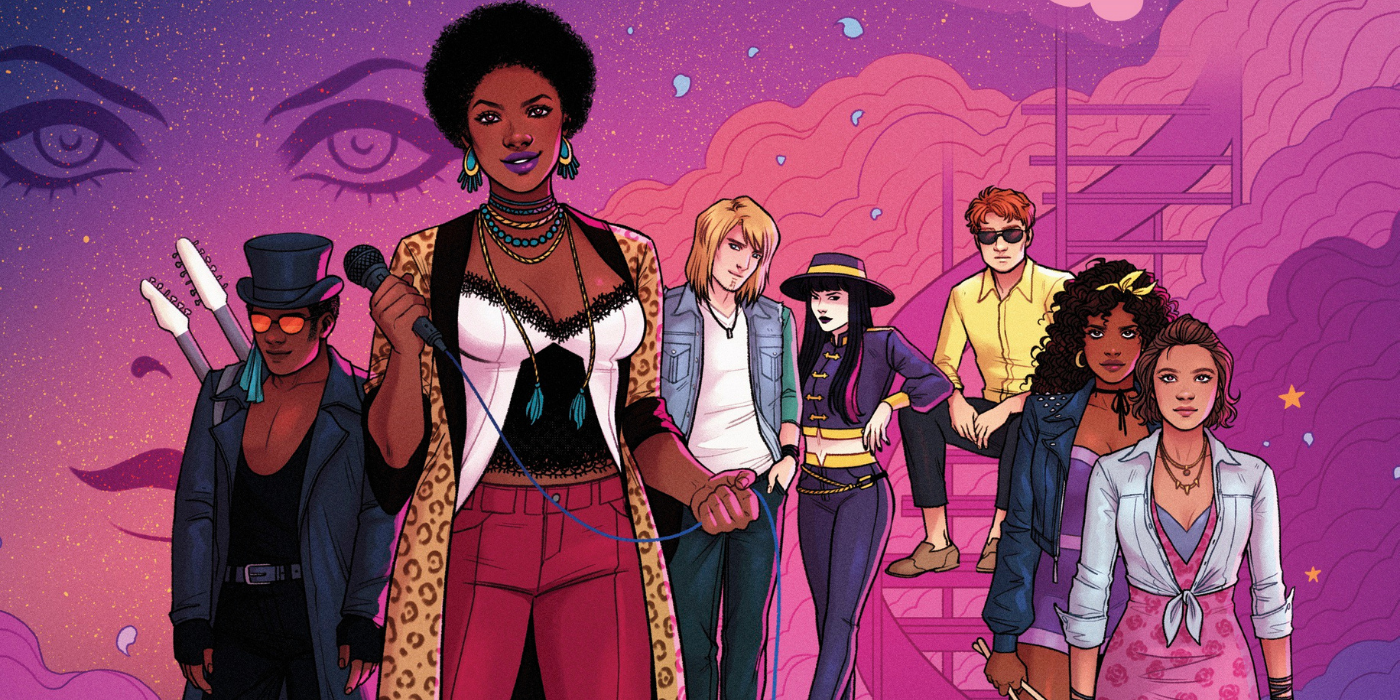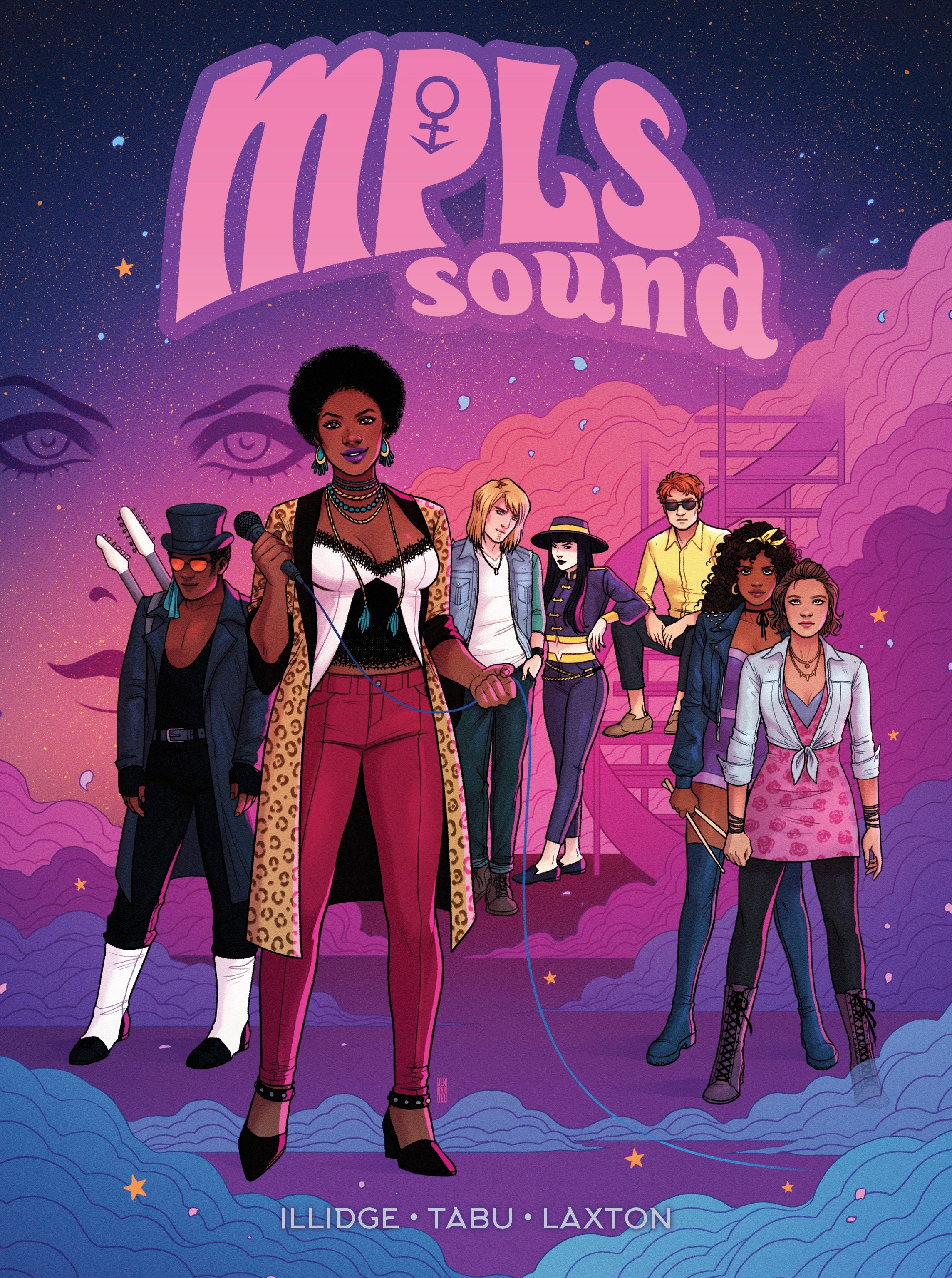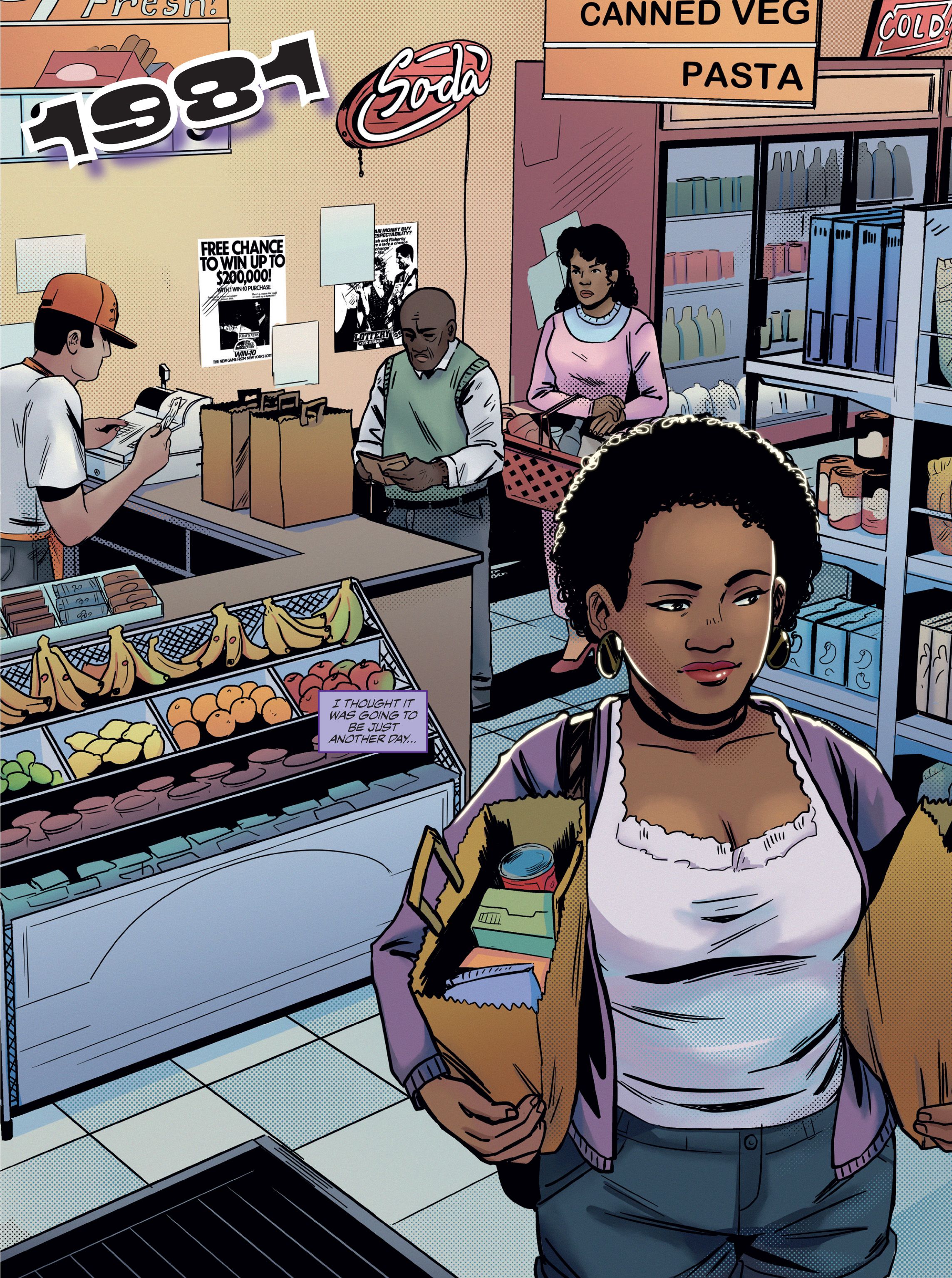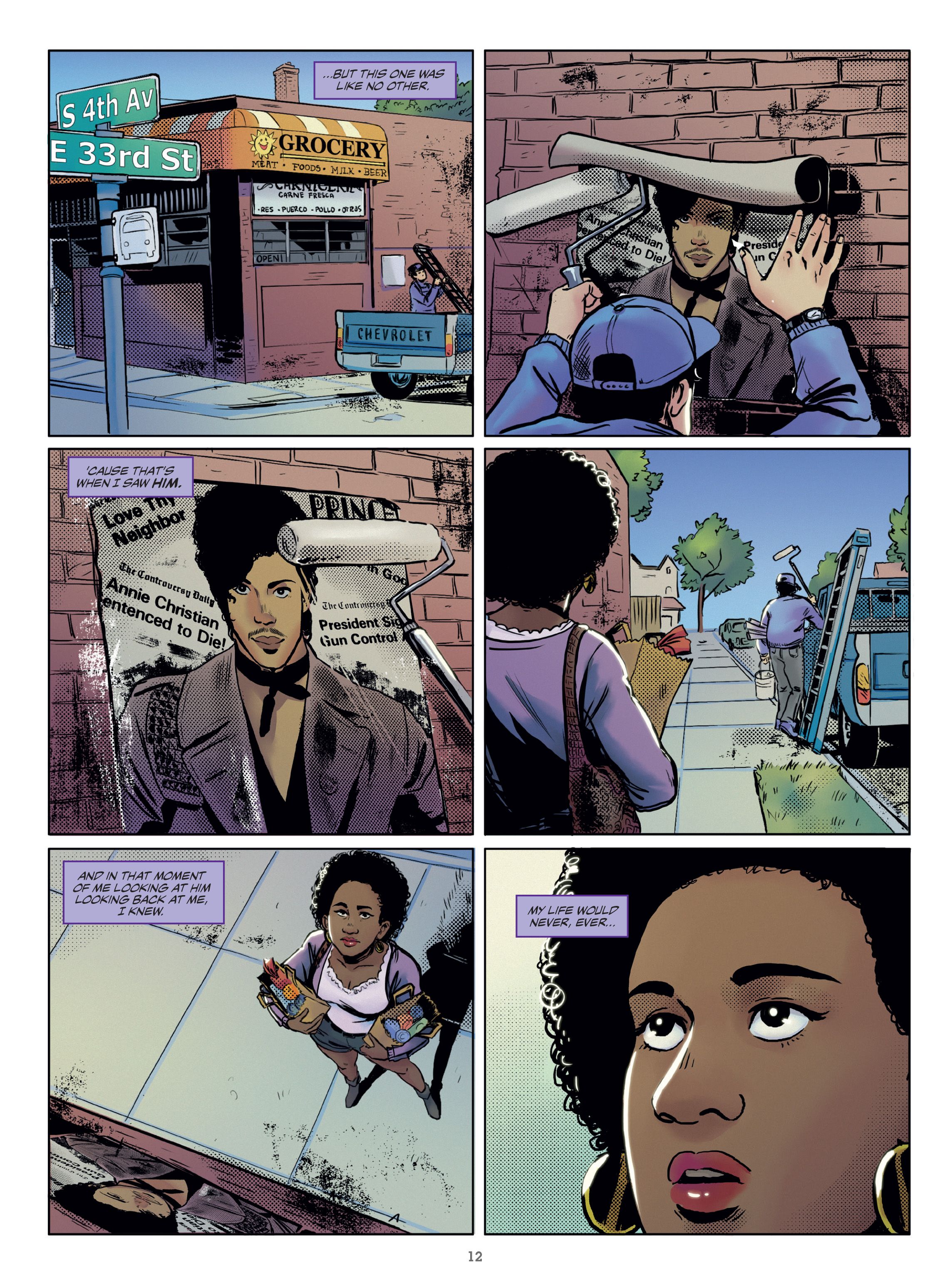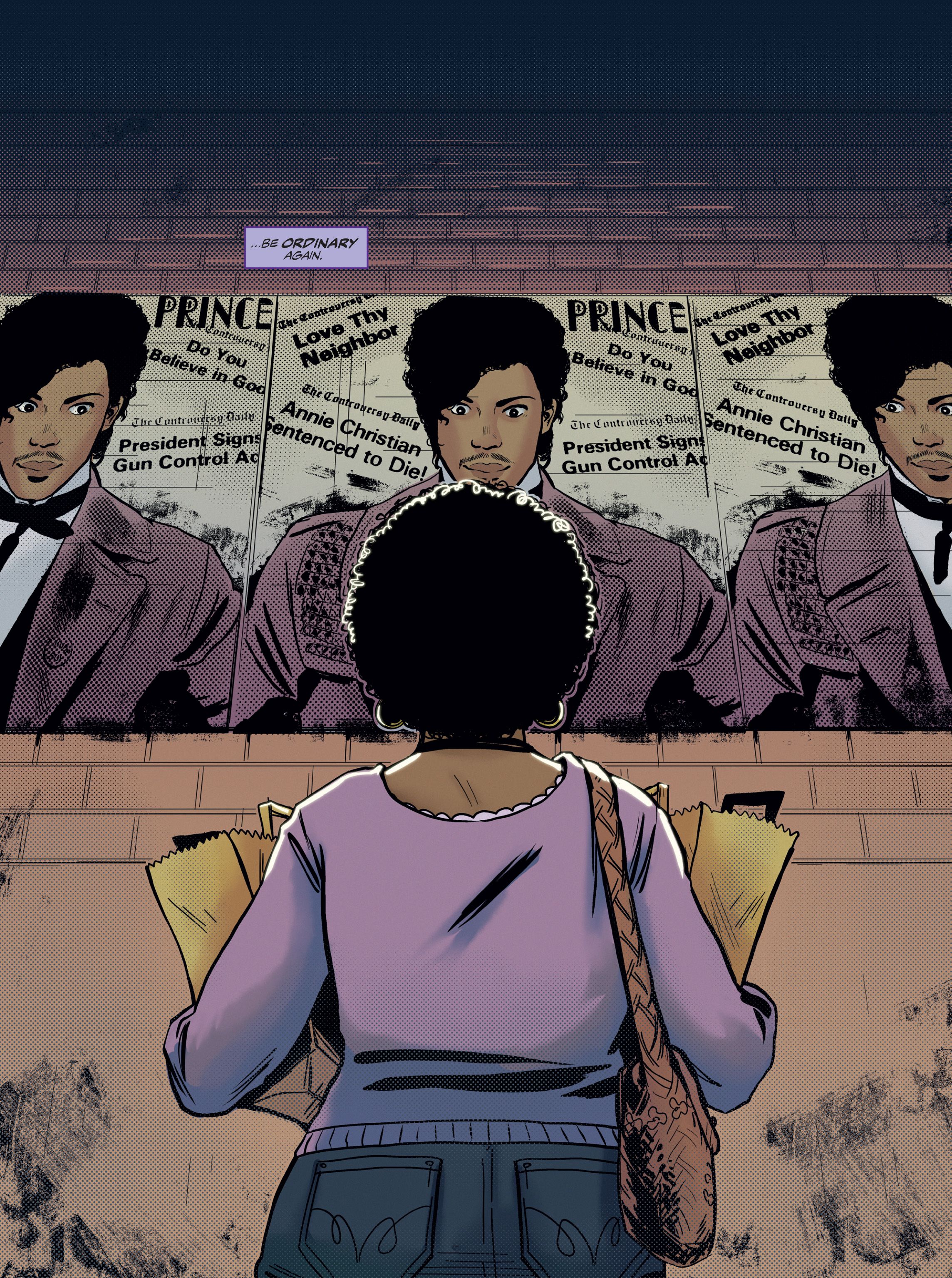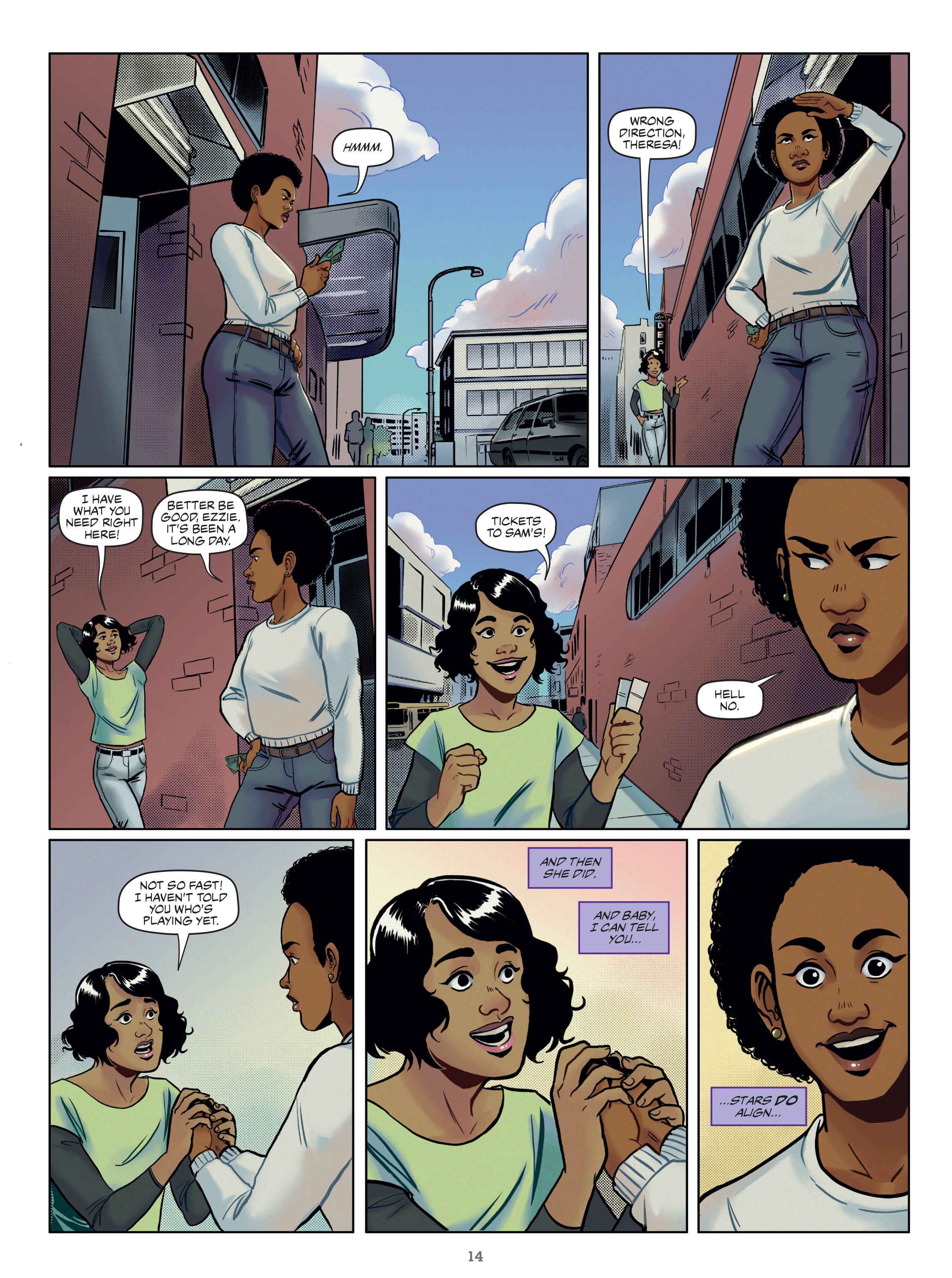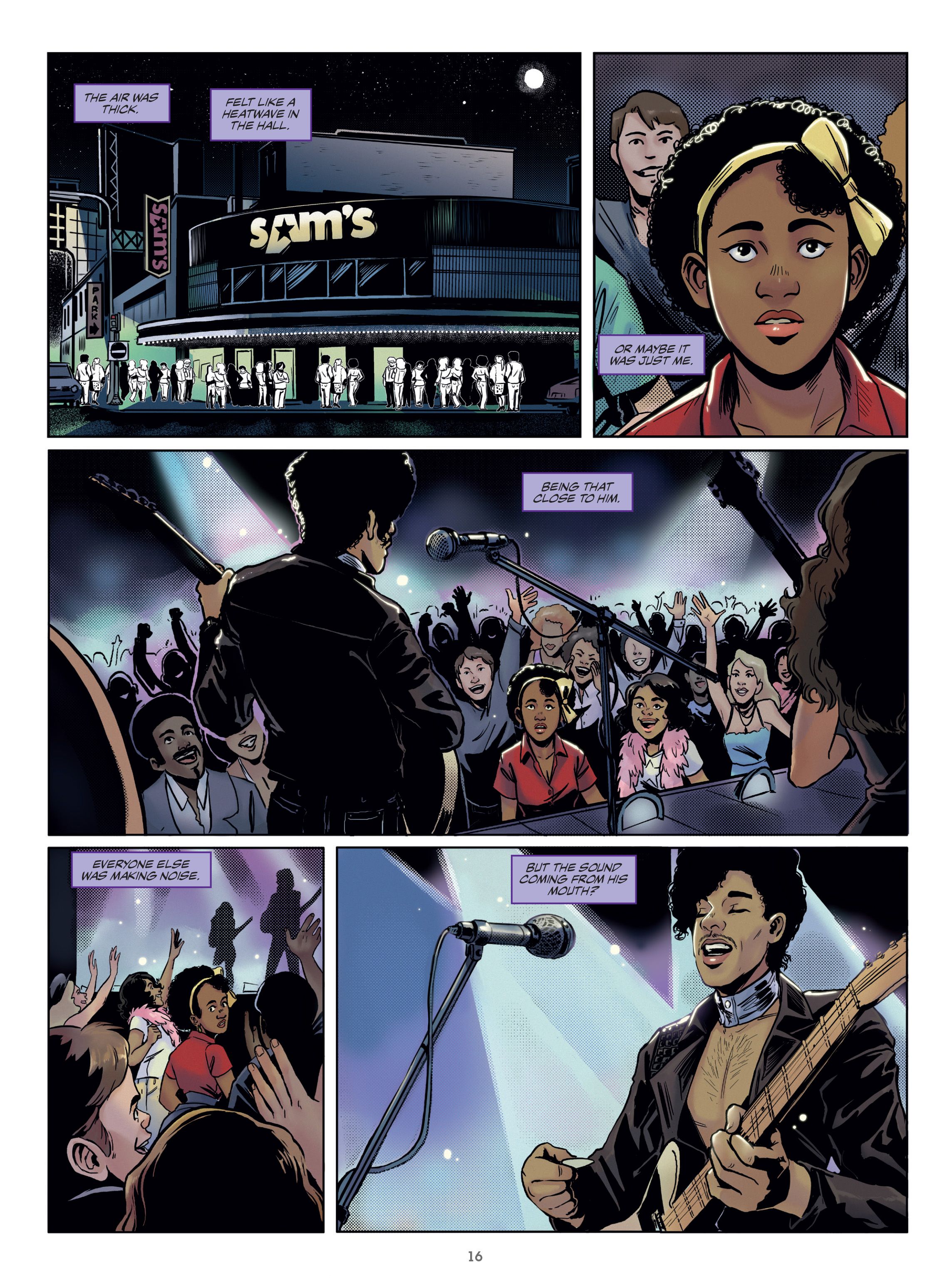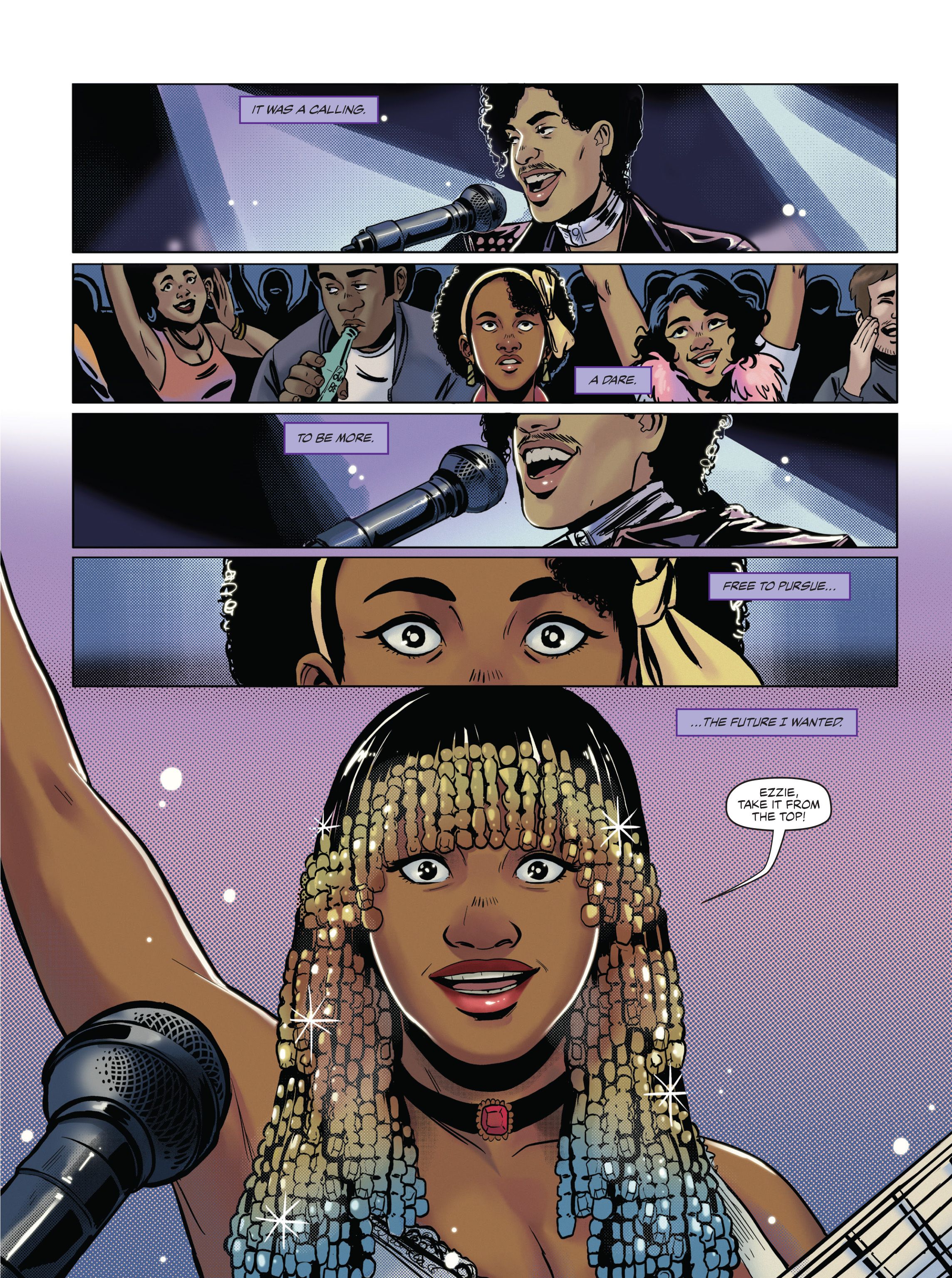The Minneapolis music scene is back in MPLS Sound, co-written by writer and editor Joseph Illidge (Hardware, Shadow Cabinet) and Hannibal Tabu (Irrational Numbers, Scoundrel, Time Corps). Illustrated by Meredith Laxton (The Crow: Hark the Herald) and published by Humanoids, this original graphic novel explores the scene made most famous by the iconic sound of Prince through the eyes of the fictional band Starchild as they navigate their way through the landscape in search of achieving their dreams. Along the way, the band and their leader, Theresa Booker, encounter legendary musicians as they determine for themselves what price they are really willing to pay to become the next rock legends.
Creators Illidge, Tabu, and Laxton sat down with CBR to discuss turning the hands of time back to this iconic age of music, as well as what it took to bring the project to life, their process in producing an accurate depiction of the era, and the influence the Purple One had on their lives.
CBR: This is an amazing project that brings to stunning life the experience of the Minneapolis music scene. What kind of research did each of you do in order to get an understanding of the look and feel of the era?
Joseph Illidge: My research started online, and through the gift of YouTube. I tracked down tons of live performances of Prince, interviews with everyone from Jimmy Jam and Terry Lewis to Dez Dickerson to Lisa and Wendy to Morris Day to Prince, himself. Hearing people talk about Prince during the early years of their time with him and in 2016 after his passing helped me get a sense of emotional arcs for these people, and their take on the effect Prince had on music and in their lives.
A number of books that were instrumental for me were Got To Be Something Here: The Rise of the Minneapolis Sound by Andrea Swensson and Heyday: 35 Years of Music in Minneapolis – The Photography of Daniel Corrigan. Past that, my writing soundtrack was Prince, The Time, Alexander O’Neal, Jesse Johnson, and the music of that scene or adjacent to it. Finally, the insights provided by the book’s initial editor, Fabrice Sapolosky. He’s a major Prince fan.
Hannibal Tabu: I pursued two avenues of investigation. First, I contracted with two people born and raised in Minneapolis – one a white woman in her 40s whose child went to the same school my daughter attended, and the second, a Black woman in her late 30s who still lives on the south side of the city. I did extensive interviews with them to try and understand the detail and nuance of their disparate experiences.
Concurrently with that, I read a lot of books published about the era and the personalities therein. I read the book that talked to Prince’s high school music teacher, who implied Prince wasn’t even the most talented student he had. I also listened to interviews, such as the amazing Jimmy Jam coverage Questlove did on his podcast, and that gave so much detail (like the fact Alexander O’Neal only referred to himself in the third person for years).
Meredith Laxton: Most of my research efforts were invested in costume and character design. I wanted the characters to wear clothing that was fitting to their personalities as well as the time period. Not to mention, many of the band members have a unique persona when they’re on-stage and capturing that '80s flashiness in their wardrobe was very important to the book.
CBR: Although they are not by any means the focus of the story, the various appearances of different artists of the era give the book a very unique and genuine feeling. A personal favorite was the depiction of Morris Day. How were you able to realistically depict these figures both from a writing and artistic perspective?
Illidge: The core attribute of almost all the famous artists who appeared in MPLS Sound was their relationship with Prince. What emotional mix defined it? What was each person’s post-Prince business perspective? The roles they play catalyze Theresa to adapt and pivot in her quest to take her band Starchild to the top.
With Morris in particular, he was intimately familiar with understanding how it felt to be a player on the grand stage of Prince’s strategically-controlled reality. The role he played in MPLS Sound spoke to being a subcontractor, and transferring down what he was getting from above. Additionally, his flamboyance was part of his stage identity and underneath the semi-facade of Morris was a grounded man who was self-aware, and loyal to Minneapolis.
Tabu: For many years, Morris was a weapon Prince used to accomplish other goals. If a song was too “Black” for the brand Prince was doing? Send it over to Morris Day's group, the Time, where the band learned the song after Prince had recorded every instrument and sang many of the background parts. In this era, before the streak of independence he showed in his David Letterman interview, Morris was kind of like Prince’s Darth Maul, and I think that shows in the work.
Laxton: My style isn’t the most realistic and, while I think I did an okay job depicting the likenesses of each celebrity cameo, I think it really came down to the characters' iconic outfits to really sell who they were. The great thing about musical artists of that time period is that they all have a very specific style of fashion.
CBR: A strong theme of this story is pursuing your dreams while maintaining your own identity in the process. A very powerful scene occurs when Starchild makes a strong statement about who they are and what they are willing to do. How much of this scene was influenced by real life events, and how have you dealt with this in your own lives?
Illidge: Various Black artists, phenoms, and businesspersons in entertainment drew a line when it came to preserving their creative identity. Muhammad Ali. Michaela Coel. Steve McQueen. Prince. Theresa is a Black woman, with all the fortitude being one entails, and her sense of self was forged in defiance of many things. Her character wouldn’t allow for any other response.
My absence of compromise comes more in the form of personal and professional tenacity, as opposed to avoiding scenarios that could transform you. Responsibilities to people other than yourself mean the decisions you make aren’t just about your wants in any given situation. Even Theresa didn’t make the final decision alone. She made the decision for herself, but not for Starchild.
Tabu: I spent many years as part of the Anansi Writers’ Workshop in Leimert Park under the indirect tutelage of poet Kamau Daaood. He intoned on one piece called “Papa Lean Griot,” invoking one of his forebears, “I am Horace Tapscott, and I am not for sale.” As my career shows, I’m certainly available for rent, but the ownership rights should never been in question.
Laxton: As an artist, I find this part of the story to be incredibly powerful. No one person can tell you exactly what your style should be, you discover it through the process of making art. Sometimes you follow in the footsteps of your idols and other times you have to diverge down a different path and try your own thing.
CBR: Whose idea was it to include Prince in the graphic novel, and what were the challenges of writing and drawing such an iconic figure?
Tabu: Joe can correct me if I’m wrong, but my recollection is that the decision to directly include Prince came down once legal at Humanoids cleared it.
Illidge: There was never a debate about whether Prince would appear, but rather whether or not he would speak. The challenge was once you’re told Prince can have dialogue, you have the sense to know that such an opportunity has to be used sparingly, with purpose, and speak truth to character. Prince was a person who endeavored to control the atmosphere in any room he occupied. The degree to which that can be done changes person to person, and through the passing of time. He was both an intimidating and exciting muse.
Laxton: I think everyone has an idea of Prince as being a very extravagant, avant-garde, and sexy musical genius, but in MPLS Sound he kind of comes across a little bit like a James Bond villain. I wanted to capture this dastardly side of Prince through his body language and the general way he carries himself. He’s a little cut-off from the real world, kind of like royalty amongst commoners.
CBR: What kind of personal experience do you have with the life, legacy, and musical brilliance of Prince, and how did it influence your desire to create this story?
Tabu: Summer of 1984, two friends of mine joined me in buying tickets for some G-rated movie and sneaking into a showing of Purple Rain. I was already enamored by him based on the videos of “1999” I’d seen in rotation on MTV (back when they played music videos). The movie galvanized the idea of someone combining determination and talent to outshine the town where they landed, something that spoke very strongly to me on the humid streets of Memphis.
Illidge: Prince was the north star of sexual magnetism I could only fantasize about being as a teenager after seeing Purple Rain. He was my hero as the musician of the Batman film soundtrack. He reflected some of my personal sorrows with his music as I was freshly out of college. He’s been an elusive mystery to me ever since. All of that, and I had no idea of the seminal origins and landscape of the Minneapolis Sound, so helping to make this story was a desire to give people a sense of discovery, or a rekindling of existing knowledge through the prism of a fictional band’s journey.
Laxton: I love Prince’s music and his visual style has influenced me a lot in the way I look at myself and my own gender expression. Being offered to draw MPLS Sound was like being offered a chance to get a little bit closer to someone I idolized very much.
CBR: What was your process for designing the great '80s-era outfits of Starchild?
Laxton: I took suggestions from both writers as a starting point and jumped off from there. Each character has their own musical backgrounds and preferences and the diversity of their outfits which adds to the melting pot theme of Starchild. I liked the idea that everyone in the band got to choose their own personas. Theresa is a little different. Since the book is about her journey of self-discovery, I felt that it was important that her on-stage wardrobe evolves from the first performance to the last.
CBR: What would each of you like potential readers to know about this book?
Illidge: MPLS Sound is a love story about the direct and indirect effects of music on people who choose to be a vehicle for its power, told with the energy and flow of funk, ballads, and music videos from the Eighties. You won’t be bored.
Tabu: I would like them to get the same sense that Prince gave me – that you can willpower your way out of rough situations. I also want them to know what I didn’t fully grasp back in the 1980s, that there may be unexpected obstacles in your way and that your definition of success can shift.
Laxton: I think the greatest thing about MPLS Sound is that it can appeal to so many readers, comic fans or otherwise. I was first introduced into comics by reading graphic novels just like this, and it’s exciting to me that someone who has never read a comic before might pick this up and find a new passion for it.
CBR: What projects can readers expect from you in the future?
Illidge: There’s a new musical fiction graphic novel from me in the works, and it goes further back in time.
Tabu: This week, my 12-issue run on Time Corps from Wunderman Comics hits the 1/3 mark, a cross-temporal science fiction adventure that I had so much fun writing. Later this year, another Wunderman Comics release will be a supernatural western three-issue mini-series called War Medicine, and I just got pencils back from Roy Allan Martinez for the first issue. Finally, this November, Second Sight Publishing will bring Project Wildfire to comic book stores everywhere, so I’m very hyped about that.
Laxton: Me and my writer friend, George O’Connor, have a short series called Charlie’s Spot coming out in October from Comics Experience. I am also currently working on an unannounced graphic novel adaptation of a YA horror/thriller.
MLPS Sound is by Joseph Illidge, Hannibal Tabu, Meredith Laxton, Tan Shu, ALW's Troy Peteri, and Ryan Lewis, and is available now from Humanoids.

